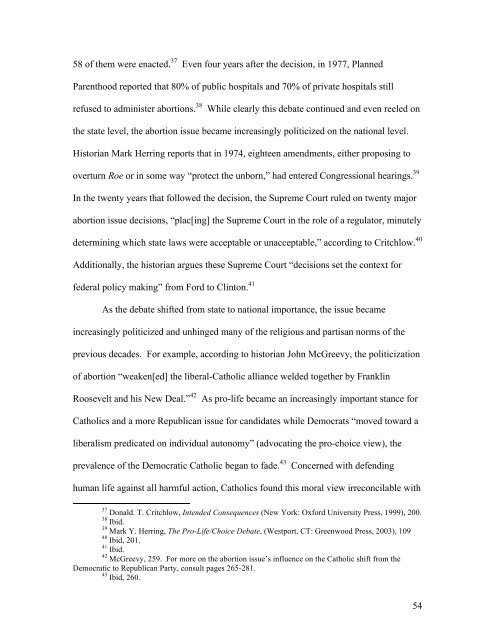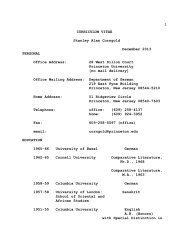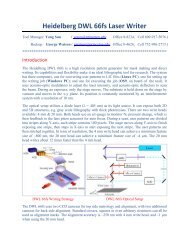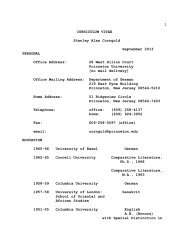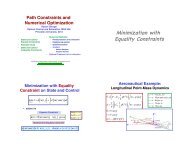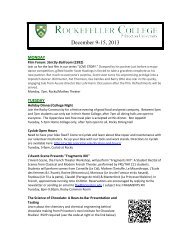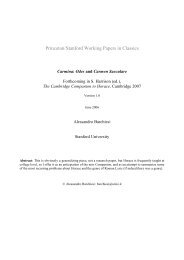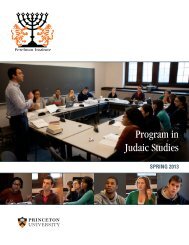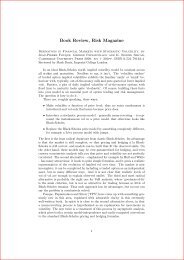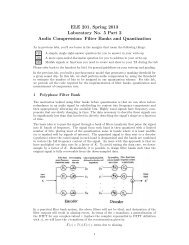The Pre-Roe Pro-Life Movement in Minnesota and New York
The Pre-Roe Pro-Life Movement in Minnesota and New York
The Pre-Roe Pro-Life Movement in Minnesota and New York
Create successful ePaper yourself
Turn your PDF publications into a flip-book with our unique Google optimized e-Paper software.
58 of them were enacted. 37 Even four years after the decision, <strong>in</strong> 1977, Planned<br />
Parenthood reported that 80% of public hospitals <strong>and</strong> 70% of private hospitals still<br />
refused to adm<strong>in</strong>ister abortions. 38<br />
While clearly this debate cont<strong>in</strong>ued <strong>and</strong> even reeled on<br />
the state level, the abortion issue became <strong>in</strong>creas<strong>in</strong>gly politicized on the national level.<br />
Historian Mark Herr<strong>in</strong>g reports that <strong>in</strong> 1974, eighteen amendments, either propos<strong>in</strong>g to<br />
overturn <strong>Roe</strong> or <strong>in</strong> some way “protect the unborn,” had entered Congressional hear<strong>in</strong>gs. 39<br />
In the twenty years that followed the decision, the Supreme Court ruled on twenty major<br />
abortion issue decisions, “plac[<strong>in</strong>g] the Supreme Court <strong>in</strong> the role of a regulator, m<strong>in</strong>utely<br />
determ<strong>in</strong><strong>in</strong>g which state laws were acceptable or unacceptable,” accord<strong>in</strong>g to Critchlow. 40<br />
Additionally, the historian argues these Supreme Court “decisions set the context for<br />
federal policy mak<strong>in</strong>g” from Ford to Cl<strong>in</strong>ton. 41<br />
As the debate shifted from state to national importance, the issue became<br />
<strong>in</strong>creas<strong>in</strong>gly politicized <strong>and</strong> unh<strong>in</strong>ged many of the religious <strong>and</strong> partisan norms of the<br />
previous decades. For example, accord<strong>in</strong>g to historian John McGreevy, the politicization<br />
of abortion “weaken[ed] the liberal-Catholic alliance welded together by Frankl<strong>in</strong><br />
Roosevelt <strong>and</strong> his <strong>New</strong> Deal.” 42<br />
As pro-life became an <strong>in</strong>creas<strong>in</strong>gly important stance for<br />
Catholics <strong>and</strong> a more Republican issue for c<strong>and</strong>idates while Democrats “moved toward a<br />
liberalism predicated on <strong>in</strong>dividual autonomy” (advocat<strong>in</strong>g the pro-choice view), the<br />
prevalence of the Democratic Catholic began to fade. 43<br />
Concerned with defend<strong>in</strong>g<br />
human life aga<strong>in</strong>st all harmful action, Catholics found this moral view irreconcilable with<br />
37 Donald. T. Critchlow, Intended Consequences (<strong>New</strong> <strong>York</strong>: Oxford University <strong>Pre</strong>ss, 1999), 200.<br />
38 Ibid.<br />
39 Mark Y. Herr<strong>in</strong>g, <strong>The</strong> <strong>Pro</strong>-<strong>Life</strong>/Choice Debate, (Westport, CT: Greenwood <strong>Pre</strong>ss, 2003), 109<br />
40 Ibid, 201.<br />
41 Ibid.<br />
42 McGreevy, 259. For more on the abortion issue’s <strong>in</strong>fluence on the Catholic shift from the<br />
Democratic to Republican Party, consult pages 265-281.<br />
43 Ibid, 260.<br />
54


